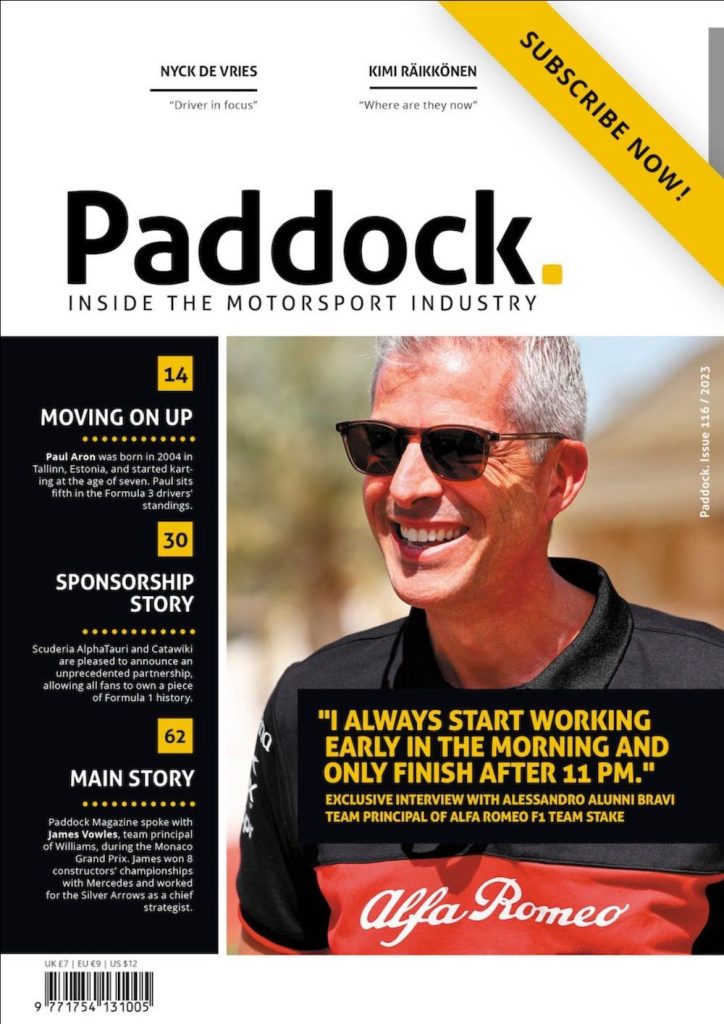Alex Hint, an author of the very creative book called ‘Will Google Buy Formula 1’, gives us his take on how things would be different if he had control of the whole sport.
Click here to subscribe to our print edition!
I would begin by pursuing the following objectives:
SPORTING REGULATIONS
The championship format
I would extend the qualifying format to the entire championship. The season would consist of three rounds (let’s say 7, 7 and 5 Grands Prix per round). Like in the qualifying, the results of the first and second rounds are only intermediate finishes, which are followed by a fresh start. Those who don’t move on to the next round will continue to compete in the championships—but now, only amongst themselves. The ten drivers who make it to the third round contend for the crown.
In the Constructor’s championship, everything will stay the same.
This format would enable Formula 1 to maintain intrigue throughout the entire season, and keep fans at the edge of their seats right up until the checkered flag of the final race. And this is an attractive prospect for everybody associated with the sport.
On a regular television screen, there’s only room for one picture or one advertising slot at a time. Thus, Formula One is forced to cut off the Long Tail of interests and advertisers.
TECHNICAL REGULATIONS
Safety
Nosecones used to be high off the ground, and in the event of an accident, potentially dangerous for the driver of the other car. This season’s low noses aren’t without their dangers, either—there’s the possibility of a nose diving under its opponent’s car. Clearly, the optimal solution lies somewhere in the middle. Safety needs to be the primary concern.
Design
Meanwhile, the solution must not offend the fans’ aesthetic tastes. High tech can be attractive—just remember Apple.
Besides, the F1 car is more than just a fast car—it’s also a vehicle for advertising the world’s brands.
Sound
The music of the engines is one of the most important factors to the sport’s emotional appeal. It’s necessary to find a solution that lets the fans savor a Grand Prix’s orchestra to the fullest extent. Meanwhile, this solution can’t be artificial.
Transferability of technology to road cars
The best minds of engineering mustn’t waste their abilities just for show. The technical solutions need to be useful beyond the sport itself.
Environmental friendliness
Formula 1’s new engines require 30% less fuel. This not only saves non-renewable resources, but it also reduces harmful emissions. It’s necessary to continue moving in this direction.
BUSINESS
Increasing the audience
Increasing the audience is of interest not only to Formula 1, but also to the manufacturers. The more eyeballs this platform can fit, the more money they can earn for their primary business—the more attractive a partnership with Formula 1 becomes.
Activating the long tail
The array of niches comprises a colossal share of the market. But on a regular television screen, there’s only room for one picture or one advertising slot at a time. Thus, Formula 1 is forced to cut off the long tail of interests and advertisers.
The Internet, however, doesn’t shut its doors on the seller with a modest advertising budget (the long tail of advertisers).
Meanwhile, the long tail of viewers (those rooting for Marussia, for example) would have the opportunity to watch any car, or even several at once, from onboard cameras and from the side. The viewer of the new digital age should be the director of his own screen.
Other extras, like fashion shows in Monaco, documentaries, old races, interviews with mechanics, F1 cartoons: all of this is another example of the long tail of interest—and lost profit.
Digital tools
The viewer of the digital age doesn’t want to be a passive observer. He wants to contribute his thoughts and emotions, and in real time. We should provide him with the tools to do so—which includes the opportunity to watch the races collectively.
Free ad-supported viewing
The inability to watch the races for free cuts off some long-standing fans and blocks the possibility of creating new ones.
Internet technology enables targeted advertising. Personalized ads throughout a two-hour race at $1 per viewer would make $1.2 billion per season. That’s not so bad, right?
PATENTING
Patents are considered among the most attractive assets. With patents, Formula 1’s shares would have a totally different price.
Crucially, the ban on the use of patented technologies must not apply to the teams.






Related Articles